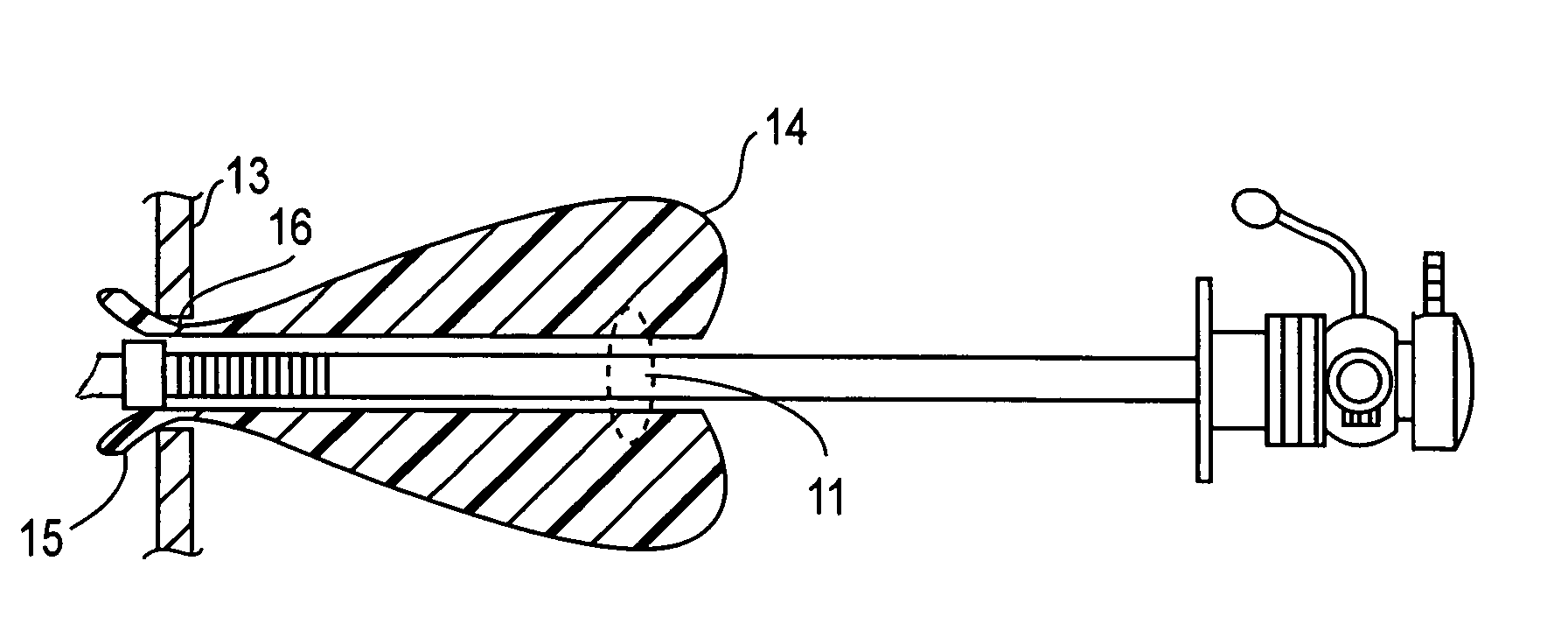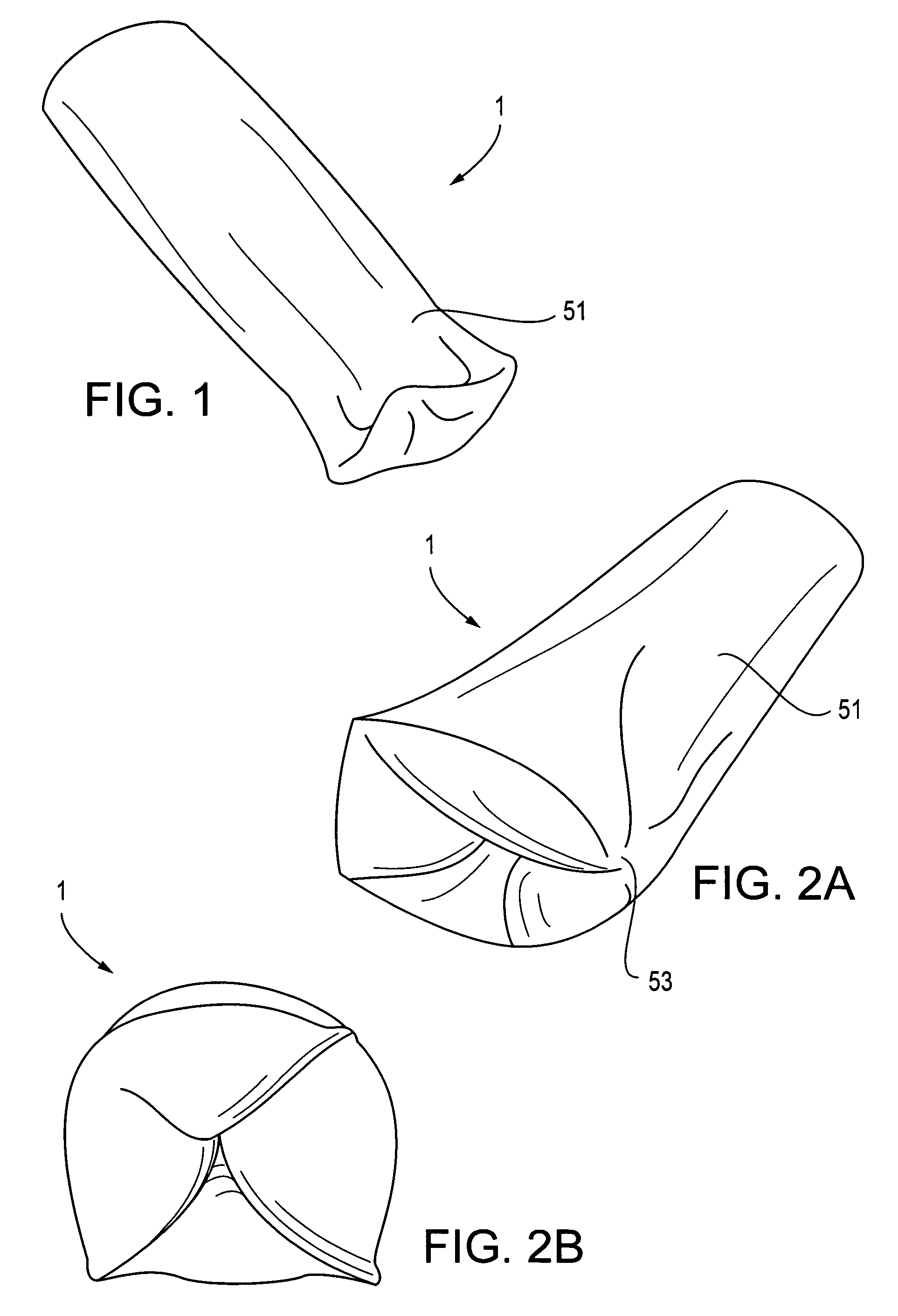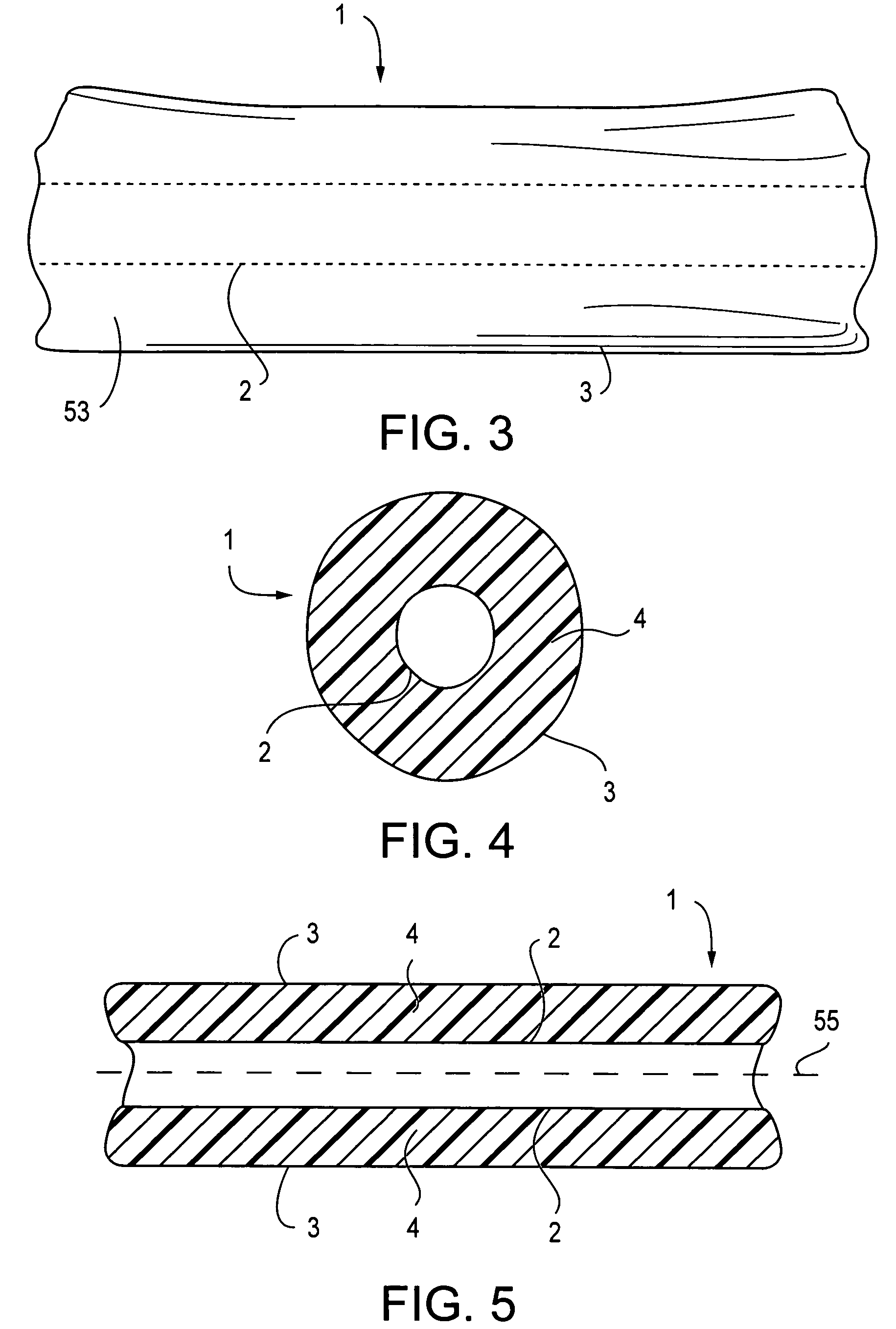Method and system for minimizing leakage of a distending medium during endoscopic procedures
a technology of endoscopic procedures and distending mediums, applied in the field of methods and systems for minimizing leakage of distending mediums during endoscopic procedures, can solve the problems of undesirable leakage, no endoscopic procedure can be performed, and endoscopic surgery is difficult or impossible, so as to reduce or minimize the leakage of liquids
- Summary
- Abstract
- Description
- Claims
- Application Information
AI Technical Summary
Benefits of technology
Problems solved by technology
Method used
Image
Examples
Embodiment Construction
[0039]The term “flexible tubular sheath” as used in the present invention is intended to encompass any double-wall hollow body which is open at both ends and which is filled with a fluid, either a liquid or gas, or a combination of a liquid and gas. The term “flexible tubular sheath” also refers to a flexible containment structure whose walls are made of a strong, relatively thick elastic distensible material, such that the cavity could be filled with only a maximum predetermined volume of liquid or gas beyond which the cavity pressure would rise steeply and the structure would burst. As used in the present invention, the term “flexible tubular sheath” is not limited to a tube, or to a tube having a cylindrical or oval cross-section, but rather the term “flexible tubular sheath” is intended to encompass a structure that has an inner hollow body defined by double walls and filled with a liquid or gas, or a combination of liquid or gas.
[0040]The terms “tissue cavity opening” and “cavi...
PUM
 Login to View More
Login to View More Abstract
Description
Claims
Application Information
 Login to View More
Login to View More - R&D
- Intellectual Property
- Life Sciences
- Materials
- Tech Scout
- Unparalleled Data Quality
- Higher Quality Content
- 60% Fewer Hallucinations
Browse by: Latest US Patents, China's latest patents, Technical Efficacy Thesaurus, Application Domain, Technology Topic, Popular Technical Reports.
© 2025 PatSnap. All rights reserved.Legal|Privacy policy|Modern Slavery Act Transparency Statement|Sitemap|About US| Contact US: help@patsnap.com



